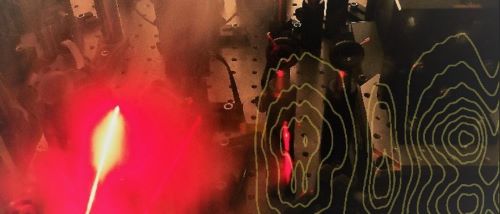Access High Throughput 2D-Infrared spectroscopy
 University of York have developed a unique 2D-IR spectroscopy technique that can measure protein structure while simultaneously measuring protein-protein interactions, at a speed comparable to SPR, that is particularly capable of charactersiting PROTACS and molecular glues. Moreover, this technique is fast and can be performed in solution using small volumes and low concentrations of material. We believe it has the potential to streamline drug design processes by allowing structural characterisation earlier in the pipeline, and are currently seeking commercial partners that are open to trialling this technique to determine if it offers efficiency savings that make this technique commercially viable.
University of York have developed a unique 2D-IR spectroscopy technique that can measure protein structure while simultaneously measuring protein-protein interactions, at a speed comparable to SPR, that is particularly capable of charactersiting PROTACS and molecular glues. Moreover, this technique is fast and can be performed in solution using small volumes and low concentrations of material. We believe it has the potential to streamline drug design processes by allowing structural characterisation earlier in the pipeline, and are currently seeking commercial partners that are open to trialling this technique to determine if it offers efficiency savings that make this technique commercially viable.Summary of the technology
Two-dimensional infrared spectroscopy (2D-IR) is a new analytical tool for studying the structure, dynamics and intermolecular interactions of proteins in solution. 2D-IR produces a two-dimensional map which provides a sensitive ‘fingerprint’ that relates directly to the structure and dynamics of a protein.
York’s globally-unique high throughput 2D-
IR instrument, in combination with our patented method allows measurement of 2D-IR spectra of proteins in H2O without the need for replacement with D2O at room temperature.
By delivering fast, structure-based information alongside binding information 2D-IR offers an improvement over current high-throughput methods that provide only binding information.
2D-IR also offers a. cheaper, faster alternative to current low-throughput structural biology tools which require low temperate crystalline samples.
Benefits of the technology
- Protein structural information in solution at room temperature
- Protein 2D-fingerprints are specific to a given protein conformation allowing mixture analysis
- Protein 2D-fingerprints are highly sensitive to drug binding
- Protein 2D-fingerprints deliver quantitative measurements of drugprotein bindingFast data acquisition (~ 1 minute per spectrum)
- Small sample volume (10 μL)
- Straightforward sample preparation
- Automated data collection and support for data analysis
Market applications
- Drug candidate selection screening
- Drug candidate optimisation
- Mixture analysis and quality control
- Drug binding to serum proteins (in vivo and in vitro)
Luke Souter Commercialisation manager University of York
luke.souter@york.ac.uk





















